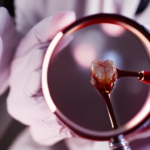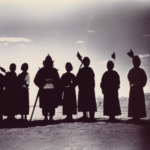Summary:
Forensic odontology is a branch of forensic science that uses dental evidence to help solve criminal cases. It involves the examination and analysis of dental records, bite marks, and dental remains to identify individuals, establish the cause of death, and provide evidence in court. Forensic odontologists play a crucial role in identifying victims of disasters, accidents, and mass fatalities. They also assist in cases of child abuse, sexual assault, and human rights violations. By utilizing their expertise in dental anatomy, pathology, and radiology, forensic odontologists contribute to the justice system by providing valuable evidence and helping to bring criminals to justice.
Dental Identification:
One of the primary roles of forensic odontologists is to identify individuals using dental records. Dental records, including dental charts, X-rays, and photographs, are compared with the dental remains of an unknown individual to establish a positive identification. The uniqueness of dental features, such as tooth morphology, dental restorations, and missing teeth, makes dental identification a reliable method, especially when other means of identification, such as fingerprints or DNA, are not available or feasible.
Bite Mark Analysis:
Forensic odontologists also analyze bite marks found on victims or at crime scenes. Bite marks can provide valuable evidence in cases of assault, sexual abuse, or homicide. By comparing the bite mark with the dental impressions of potential suspects, forensic odontologists can determine if a particular individual was responsible for the bite mark. However, bite mark analysis has faced criticism due to its subjective nature and the lack of scientific validation. Therefore, it is essential for forensic odontologists to exercise caution and rely on other corroborating evidence when presenting bite mark analysis in court.
Mass Disasters and Mass Fatalities:
Forensic odontologists play a crucial role in identifying victims of mass disasters, such as plane crashes or natural disasters. Dental records are collected from individuals who may have been involved in the disaster, and these records are compared with the dental remains recovered from the scene. By using dental identification, forensic odontologists can help bring closure to families and assist in the process of repatriation and burial.
Child Abuse and Sexual Assault:
Forensic odontologists are often called upon to examine cases of child abuse and sexual assault. They can identify patterns of dental trauma that may indicate abuse or provide evidence of bite marks in cases of sexual assault. By documenting and analyzing the dental evidence, forensic odontologists can contribute to the investigation and prosecution of these crimes.
Human Rights Violations:
In cases of human rights violations, forensic odontologists play a crucial role in identifying victims and documenting evidence. They work closely with forensic anthropologists and pathologists to examine skeletal remains and dental evidence to establish the identity of victims and document any signs of trauma or violence. This information can be used to hold perpetrators accountable for their actions and provide closure to the families of the victims.
In conclusion, forensic odontology is a specialized field that utilizes dental evidence to aid in the investigation of criminal cases. Forensic odontologists play a vital role in identifying individuals, analyzing bite marks, and providing evidence in court. Their expertise in dental anatomy, pathology, and radiology allows them to contribute to the justice system and help bring criminals to justice. Whether it is identifying victims of mass disasters, assisting in cases of child abuse and sexual assault, or documenting evidence in human rights violations, forensic odontologists provide valuable insights and support to the field of forensic science.












